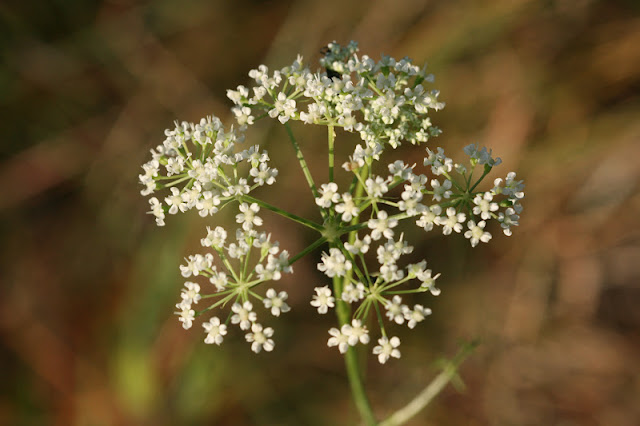Friday, September 14, 2012
Coastalplain Angelica - Angelica dentata
Coastalplain angelica (Angelica dentata) occurs in eight counties within the central panhandle of Florida and in three counties in southwestern and south central Georgia. Though very limited in its natural distribution, it is common where it occurs and is not listed.
Coastalplain angelica is a member of the carrot family and from a distance looks like water dropwort (Oxypolis filiformis). What makes this impossible is the types of habitats it occurs in. This is a species of well-drained uplands and makes its home in sandhills and open woodlands. These plants, photographed above, were blooming in late August within the sandhill regions of Torreya State Park.
Coastalplain angelica is a perennial that dies back to the ground in winter. In spring, it produces a few leaves near the base and then quickly grows upward to its mature height of about 3 feet. Few leaves are produced along the stem. As the photograph above shows, they are toothed and deeply lobed. Each is only about 1 1/2 inches long.
As other members of the carrot family, the flowers are produced in an umbel and are white. Blooming occurs in late summer and early fall and the flowers attract a diversity of small pollinators. Most members of the carrot family serve as larval food for black swallowtail butterflies. Though Angelica is not listed as one of these, I suspect that it might. It is regrettable that no one grows this wildflower commercially so butterfly gardeners could evaluate it for this purpose. As a carrot family member adapted to well-drained soils, it would seem to offer many attributes that would make it a valuable member of a mixed wildflower meadow.
I have never grown coastalplain angelica and have no experience with it to evaluate its performance in a home landscape or whether it could be pushed outside its natural range. I hope to get the chance from the few seed I recently collected in north Florida.
Subscribe to:
Post Comments (Atom)





Just wondering if you were successful in propagating Coastalplain Angelica?
ReplyDeleteI would grow this and a few other carrot family species if I were to stumble upon seed at the right time, however, this species does not grow near me and that lowers my chances of collecting seed. Will continue to keep my eye out for it during those times I am in N. FL.
ReplyDelete